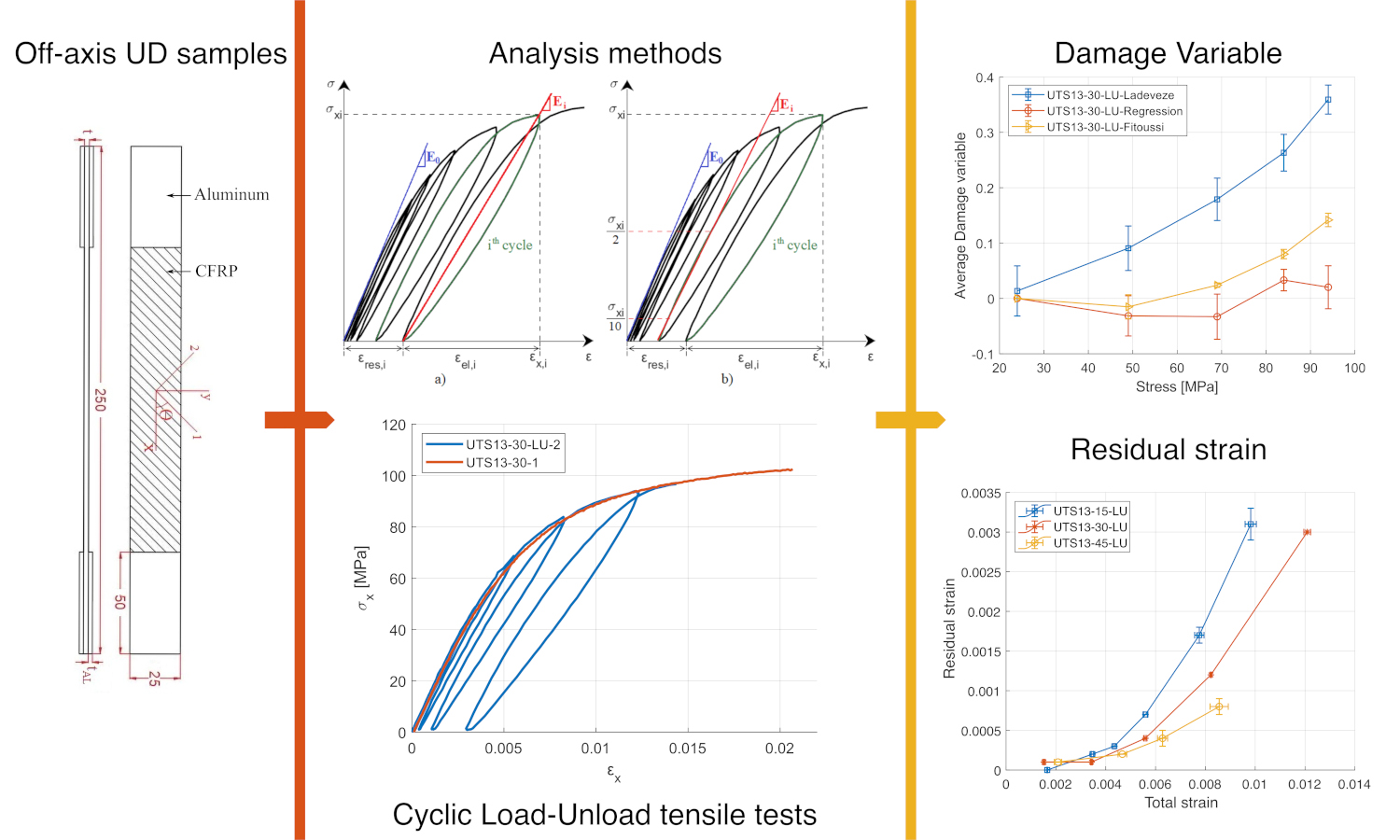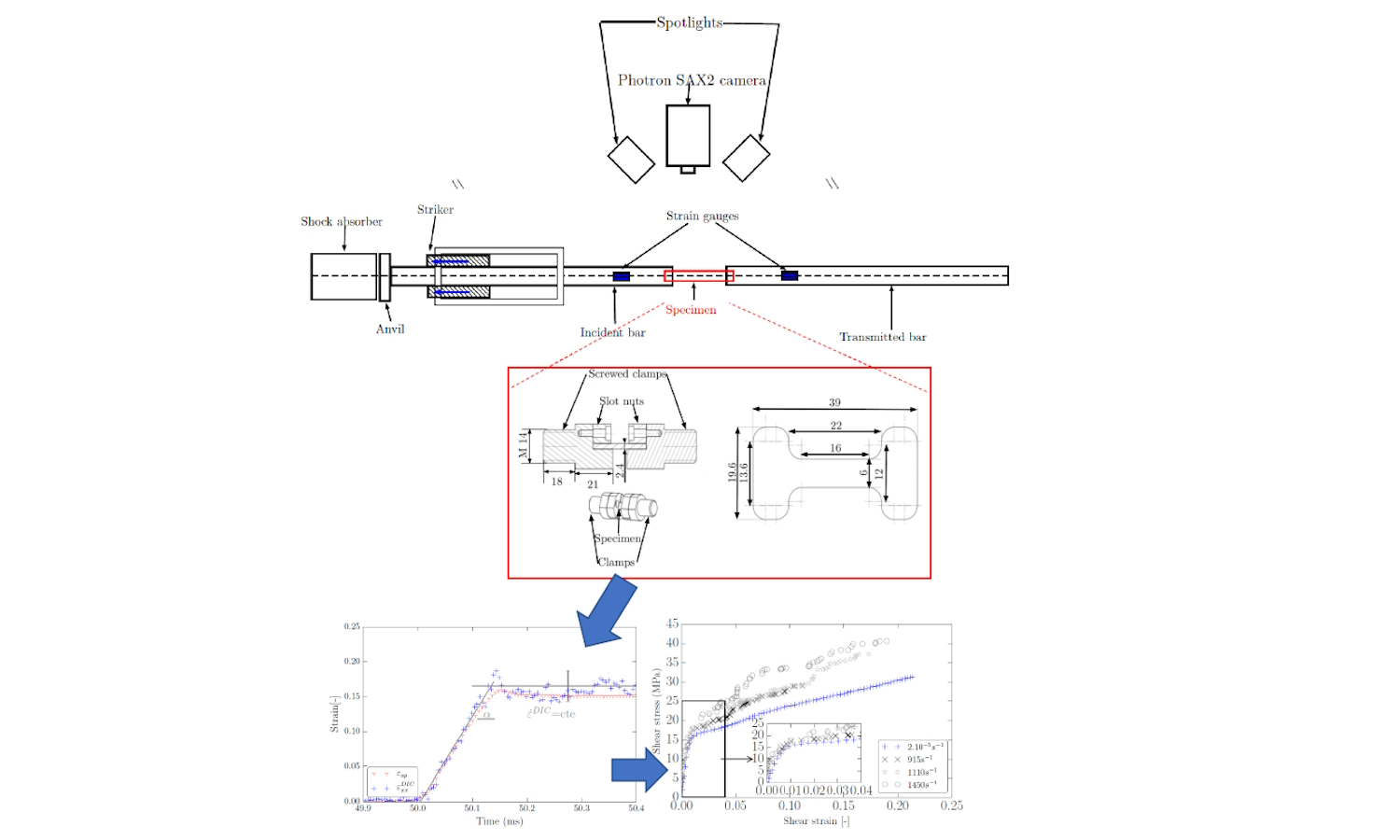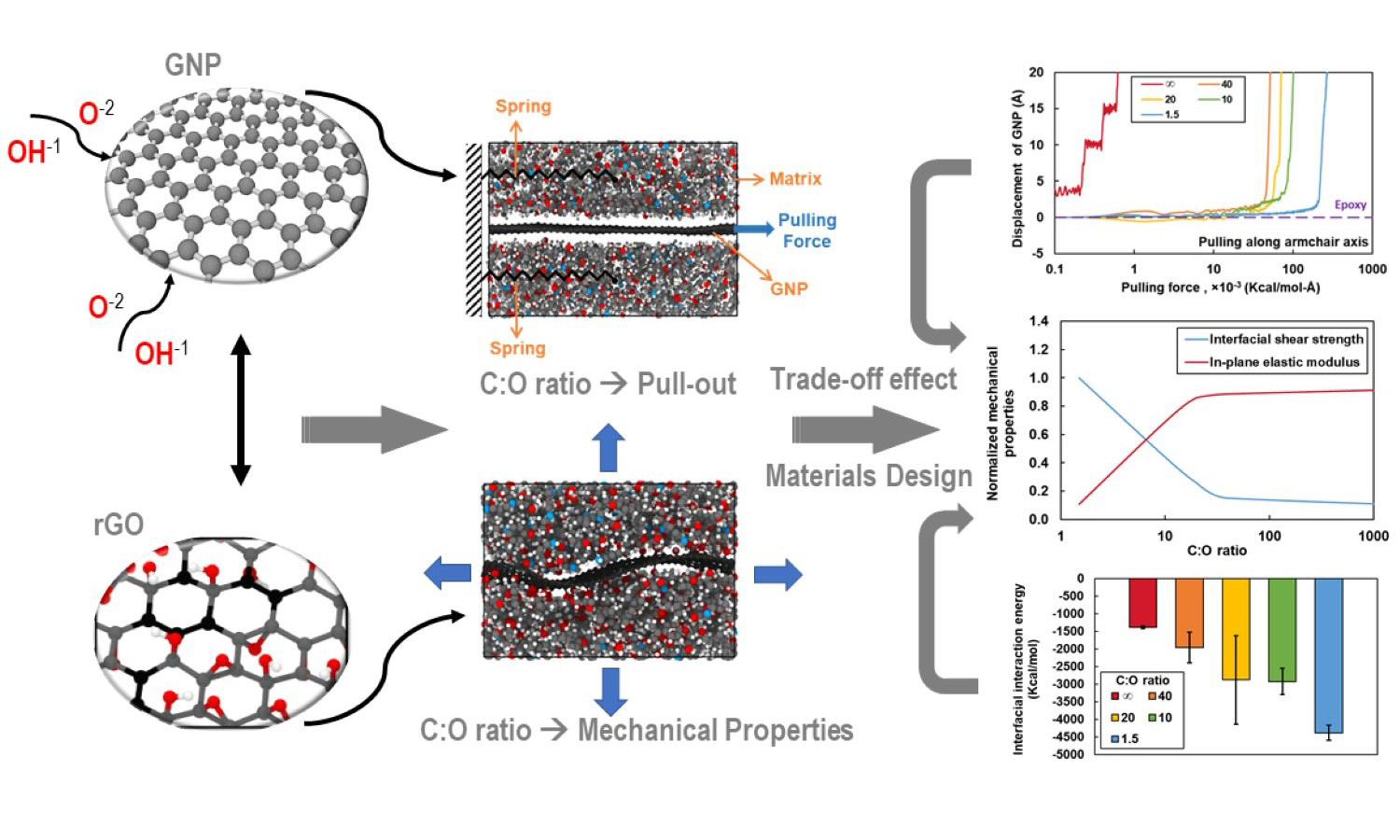Damage assessment through cyclic load-unload tensile tests for ply-level hybrid carbon fiber composites
Vol. 18., No.1., Pages 41-60, 2024
DOI: 10.3144/expresspolymlett.2024.4
DOI: 10.3144/expresspolymlett.2024.4
GRAPHICAL ABSTRACT

ABSTRACT
Composite materials are of increasing interest in aircraft and spacecraft structures, and carbon fiber reinforced polymers (CFRP) have emerged as materials meeting quality standards for structural applications in the aircraft industry. Despite their high mechanical properties, CFRPs are associated with high production costs. Building on recent research by the authors, this paper investigates the use of ply-level hybridization to reduce manufacturing costs while maintaining the mechanical performance of the manufactured material. Focusing on the causes of nonlinear response under off-axis tensile loading, the paper involves cyclic load-unload (LU) tensile tests conducted at off-axis angles of 15°, 30°, and 45° to predict mechanical characteristics and damage evolution. Residual strains are directly extracted from load-unload stress-strain responses. Three distinct methods for estimating cycle modulus are employed and compared for damage variable formulation. The research findings reveal dependencies of both the damage variable and residual strains on the off-axis angle. Furthermore, the method used to assess the modulus during cycling loading significantly influences the damage variable estimation. Encouragingly, the hybrid laminates exhibit reduced internal damage and matrix plasticity compared to reference counterparts, indicating a positive effect on the mechanical performances of hybridized CFRPs in addition to the cost reduction.
RELATED ARTICLES
Magali Castres, Aboulghit El Malki Alaoui, Camille Caisso, Martin Monloubou, Michel Arrigoni
Vol. 18., No.10., Pages 1008-1022, 2024
DOI: 10.3144/expresspolymlett.2024.77
Vol. 18., No.10., Pages 1008-1022, 2024
DOI: 10.3144/expresspolymlett.2024.77

Nowadays, ultra high molecular weight polyethylene (UHMWPE), allows the combination of lightweight, high strength and is praised for the design of severely loaded structures. It has become a good option for lightweight armour solutions. It is therefore important to characterise its mechanical behaviour. Up to now, strain rate effects on mechanical behaviour have been poorly explored. In this work, this issue is tackled by studying the strain rate influence on the in-plane deformation, in shear and tension of the Tensylon® HSBD30A, a UHMWPE dedicated to ballistic and blast protection. Two laminates of Tensylon® of respective orientation [0 °/90°]20 and [±45°]20 were subjected to static and split Hopkinson tensile bar (SHTB) tests. A new mounting system was designed, and new specimen shapes were used to match the experimental setup configurations. Digital image correlation (DIC) was used to measure the in-plane strain. A significant strain-rate dependence on the material behaviour.is evidenced. Besides, results exhibit a higher strength for the [0°/90°]20 specimen than for the [±45°]20 one. Despite some limitations, the proposed setup and measurement methods allowed visualisation of strain rate effects on the stress-strain relationship for strain rates ranging from the quasi-static regime to the dynamic one (1500 s–1).
Hashim Al Mahmud, Sagar Umesh Patil, Gregory Odegard
Vol. 18., No.3., Pages 337-347, 2024
DOI: 10.3144/expresspolymlett.2024.24
Vol. 18., No.3., Pages 337-347, 2024
DOI: 10.3144/expresspolymlett.2024.24

Graphene oxide (GO) nanoplatelets can be used to reinforce neat resin or the matrix phase of fiber composites for improved mechanical properties. Although the oxygen content levels in GO and reduced graphene oxide (rGO) strongly influence the interface with the polymer, experimental-based optimization of the oxygen content for enhanced composite properties is difficult and time-consuming. Fortunately, molecular dynamics (MD) simulation can be used to efficiently predict the interfacial properties of composite on the molecular level and provide physical insight into the effect of the oxygen content of rGO. In this study, MD is used to predict the elastic properties of rGO/epoxy interfaces and the corresponding interfacial shear strength (IFSS) for different oxygen content levels. The results indicate that increasing levels of oxygen in rGO results in interfaces with a reduced in-plane elastic modulus but a substantially higher IFSS. These results are important for the design of rGO/epoxy composites for specific engineering applications.




